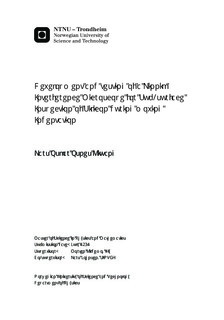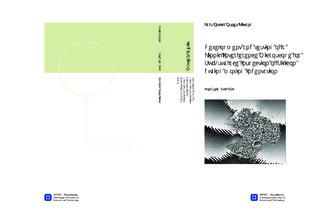| dc.contributor.advisor | Kildemo, Morten | nb_NO |
| dc.contributor.advisor | Johnsen, Lars | nb_NO |
| dc.contributor.author | Kittang, Lars Oskar Osnes | nb_NO |
| dc.date.accessioned | 2014-12-19T13:17:55Z | |
| dc.date.available | 2014-12-19T13:17:55Z | |
| dc.date.created | 2012-11-08 | nb_NO |
| dc.date.issued | 2012 | nb_NO |
| dc.identifier | 566545 | nb_NO |
| dc.identifier | ntnudaim:7776 | nb_NO |
| dc.identifier.uri | http://hdl.handle.net/11250/246803 | |
| dc.description.abstract | Fixed-abrasive diamond wire sawing is a promising technique for reduction of costs related to sawing of silicon wafers for solar cells. The microscopic mechanisms of material removal in the process are however not fully understood, and must be surveyed in order for costs to be further reduced.An interference microscope for sub-surface inspection of mono-crystalline silicon has been built based on the Linnik configuration, with specific application to in-situ monitoring of moving indentations. The working principles of the instrument are explained from a literature study on relevant theory, combining concepts of optical interference and coherence with imaging theory. The optical system has been experimentally tested in terms of its performance in conventional imaging as well as its interferometric capabilities. Tests on the imaging performance show that a large magnification is accompanied by a lateral resolution with a lower limit of $0.9mumathrm{m}$ and an adequately long depth of field. This provides improved conditions for imaging of internal reflections in silicon, compared to a previously used prototype.Using a light source of low temporal coherence, the capability of the system to measure depth profiles of silicon surfaces has been tested. The technique calculates depths from interferograms recorded by scanning of a reference field. Preliminary results from a flat test surface show that depths are not determined accurately enough for calculated profiles to be considered as reliable reconstructions. It is discussed that the inaccuracy is caused by a number of experimental factors including non-uniform illumination, undesired reflections and non-uniform sampling intervals in scanning.Two experiments with moving indentations on silicon surfaces have been performed, monitored by conventional imaging and calculation of interferometric phase maps, respectively. Results are seen in context with the theoretical understanding of material removal mechanisms in fixed-abrasive diamond wire sawing. The evolution of surface damage is observed as interconnection of chippings in both experiments. In addition, sub-surface lateral cracks are identified from interferometric phase maps. The phase maps of surface damage can, however, only to a limited extent be interpreted as topographic contour lines of surface depth. A deeper knowledge of removal mechanisms requires quantitative measurements of depths. This can be better achieved by calculating accurate depth profiles from interferograms. Future enhancement of the system is dependent on a reevaluation of the optical design as well as better control of sampling intervals in scanning. | nb_NO |
| dc.language | eng | nb_NO |
| dc.publisher | Institutt for fysikk | nb_NO |
| dc.subject | ntnudaim:7776 | no_NO |
| dc.subject | MTFYMA fysikk og matematikk | no_NO |
| dc.subject | Teknisk fysikk | no_NO |
| dc.title | Development and testing of a Linnik Interference Microscope for Sub-surface Inspection of Silicon during moving Indentation | nb_NO |
| dc.type | Master thesis | nb_NO |
| dc.source.pagenumber | 137 | nb_NO |
| dc.contributor.department | Norges teknisk-naturvitenskapelige universitet, Fakultet for naturvitenskap og teknologi, Institutt for fysikk | nb_NO |

